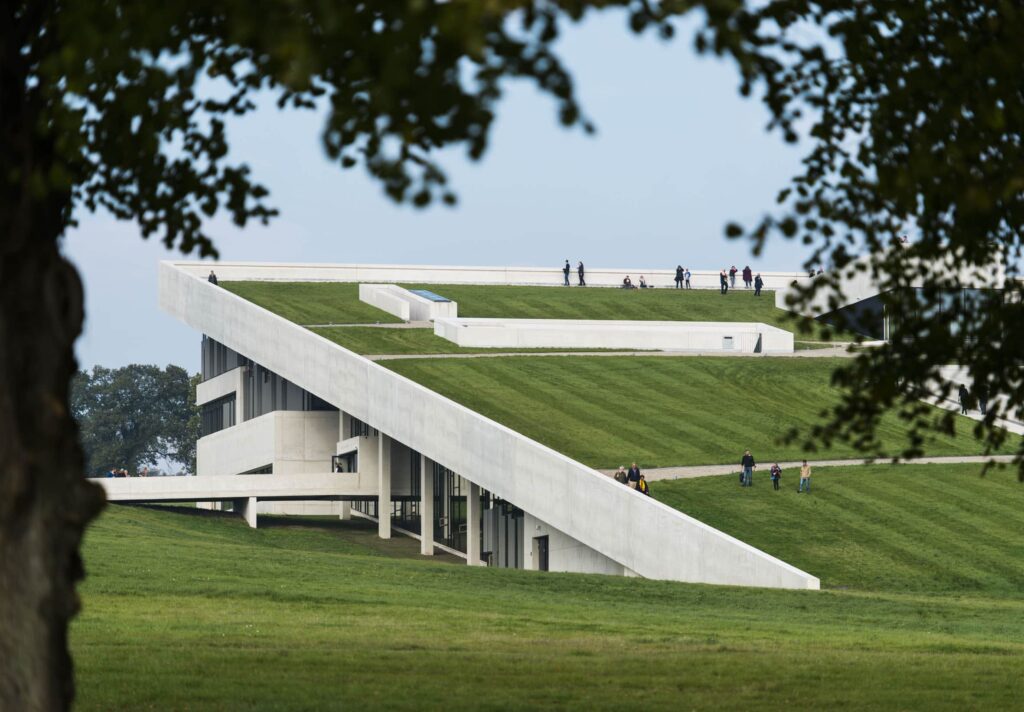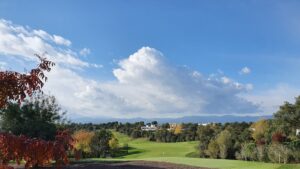Our climate is changing with more heat and longer drought incidents. At the same time, we experience more cases of intense rainfall where cloudbursts are challenging the capacity of city drainage systems. Solutions to reduce runoff volumes and to improve water quality by filtering sediment and other pollutants are increasingly needed. For some solutions, turf grass is an important component and co-player. Traits such as drought tolerance, salt tolerance and long roots are important characteristics in order to be able to withstand difficult growth condition and secure the functionality of the solution.
Grass swales are often seen as solutions for stormwater retention. During a cloudburst, run off water from roads and other impermeable areas is allocated to the swales where water will accumulate and slowly soak into the soil (infiltration). Most of the year these grass areas are dry.
Cities have many surfaces with limited water infiltration. In a cloudburst situation this may cause problems and pavements with increased infiltration rates are designed with grass reinforcements. The materials used for these constructions are very coarse and almost without organic material.
For both solutions the water quality going into the construction is poor and often contains salt, organic matter and other problematic substances. In an extreme situation it is mixed with sewage.
Green roofs are excellent at stormwater retention and reduce the water runoff by about 50%, thereby delaying the waterflow to the drainage system.
A green roof is designed with a layer of vegetation planted over a waterproofing system installed on a flat or slightly sloped roof. The growth media is shallow, and drought can be an issue.
For all of the above climate solutions, we need robust and resilient grasses that can cope with challenging conditions. A common feature is drought – especially linked to grass reinforcements with coarse growth media and low water retention. Here the grasses must be able to withstand drought and the logical choice would be fescues or 4turf – tetraploid turf perennial ryegrass.
In two of the constructions, the water from cloudbursts is contaminated. For optimal performance, grasses with a high salt tolerance should be included for these areas.
In all areas, it is important that water infiltrates the soil at high speed and the best solution includes grasses with long roots and a high persistency – meaning that they continuously produce roots deep into the soil. When roots wither, the root channels will function as water channels. Grasses for improved infiltration have been identified in forage grass. The management of cloudburst water is a challenge and as a grass seeds supplier it is our task to supply solutions which provide good qualities and improved hydraulic functions.








